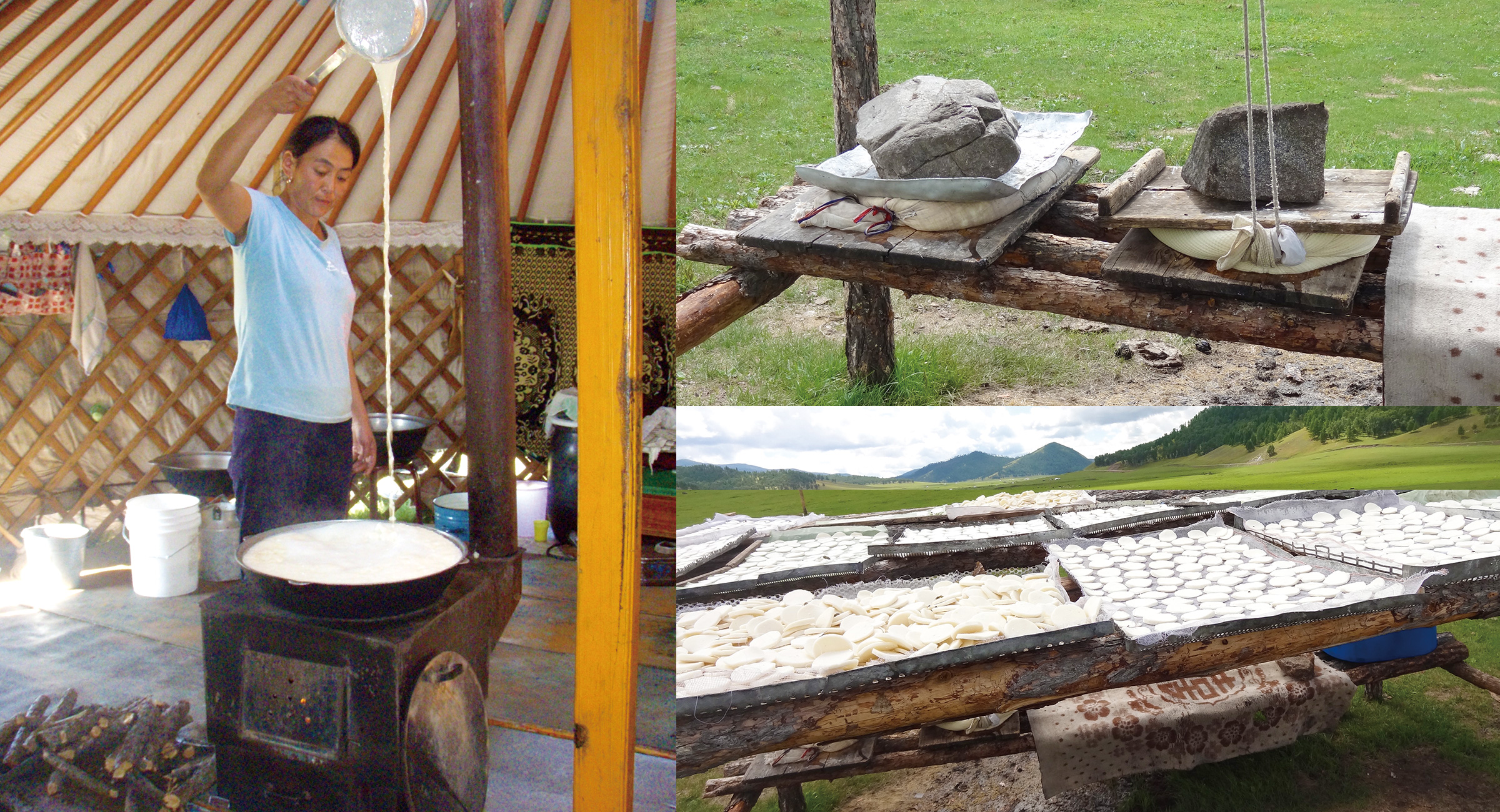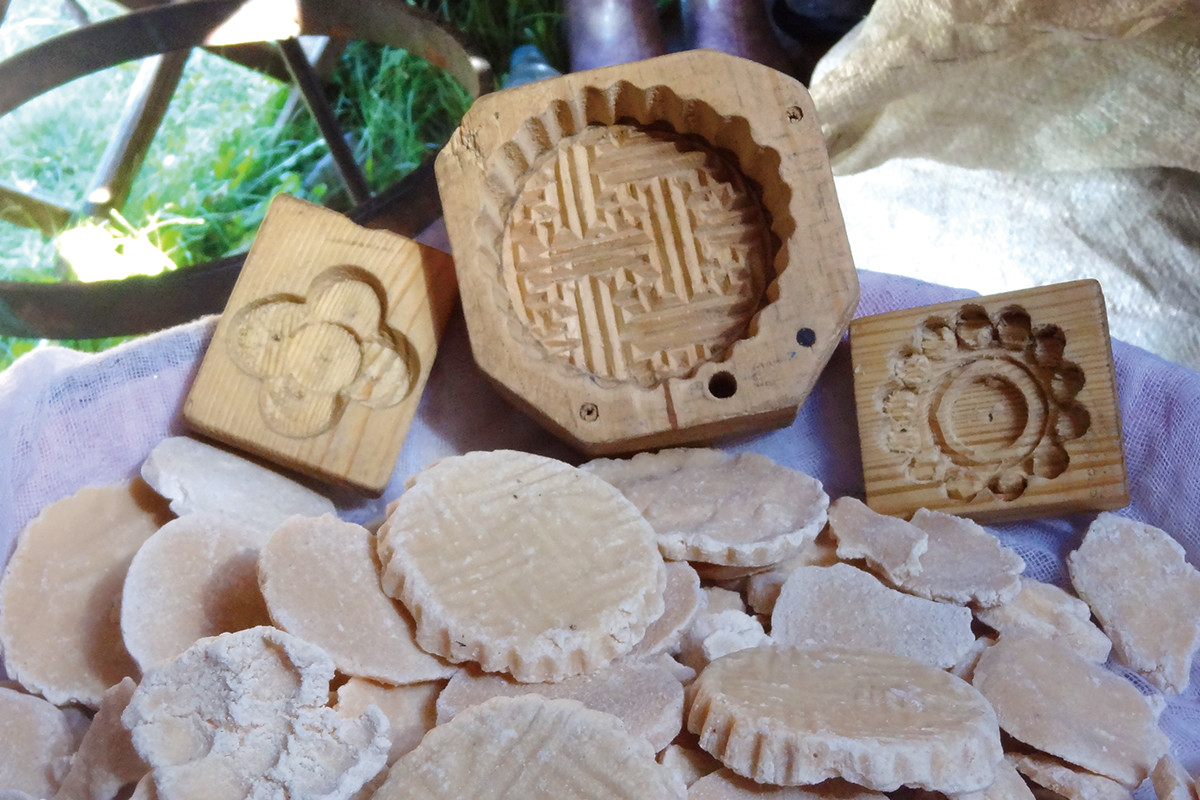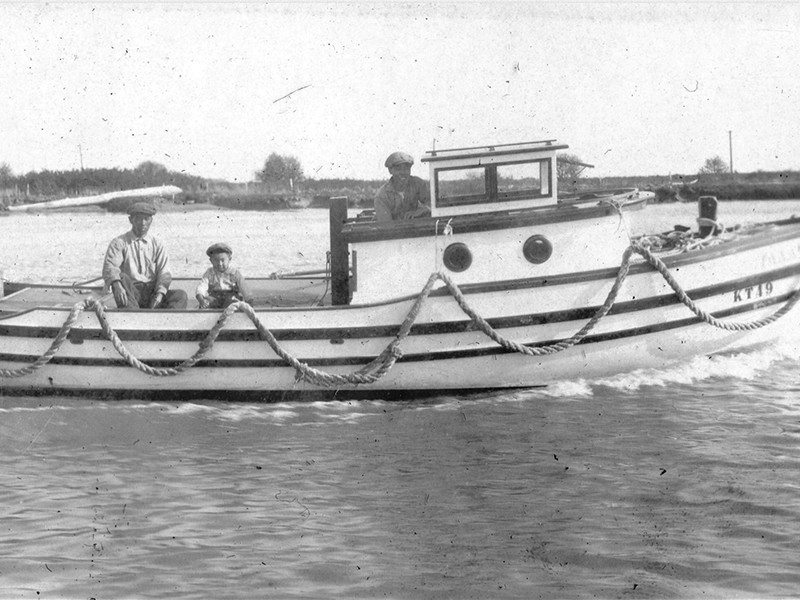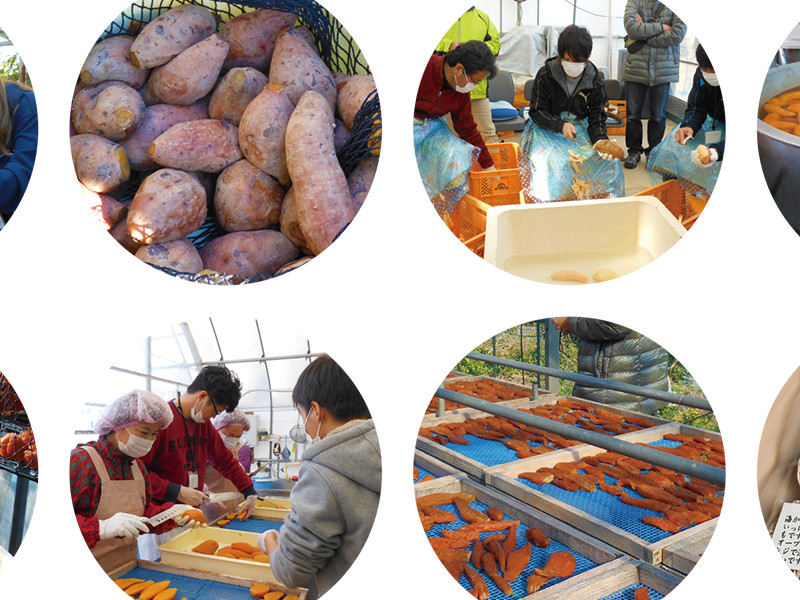STORY #3
“White Food,” Supporting the Livelihoods of Nomads in Mongolia
Takahiro Tomita
Senior Researcher, Ritsumeikan Global Innovation Research Organization
Exploring changes in the Mongolian dairy industry over the 20th century
The vast expanse of the great plains of Mongolia. Ger (tents) in the distance appear tiny. Nomadic pastoralists (nomads) move slowly across the landscape with their livestock. In the minds of many people, this image of Mongolia has not changed since the Mongolian Empire was built by Genghis Khan in the early 13th century.
Takahiro Tomita points out that “even in academia, there has been little research to bridge the gap between the so-called traditional Mongolia that existed before the 20th century and that of the modern era.” Tomita feels that there is no way to discuss present day Mongolia without reviewing the socialist era since the 1920s. By focusing on one of Mongolia’s key industries, animal husbandry, he conducts research pertaining to the production, consumption, and distribution of Mongolian livestock products under the social and economic changes of the 20th century. In particular, by studying the impact of socialization since the 1920s in addition to democratization and market-oriented economic reforms in the 1990s, he is attempting to understand changes in Mongolian pastoralist society from a brand new perspective.
For Mongolian nomads, meat and dairy products are very important food resources. Meat is referred to as “red food,” while dairy products are known as “white food,” and people’s livelihoods depend upon both. According to Tomita, Mongolia has a history in which one or a few households as a basic unit traditionally kept livestock and consumed most parts of meat and dairy products in a self-sufficient manner. The variation among the dairy products that Tomita pays attention to is rich, and nomads have accumulated complex and diverse techniques for processing dairy products over the years.
As elucidated by Tomita, since the establishment of the Mongolian People’s Republic as a socialist state in 1924, the ways of breeding and distribution of livestock has drastically changed. “Basically, self-sufficient consumption within families was the mainstream beforehand, but from the early 1940s, national procurement of meat, fur, leather, milk, etc. started in conjunction with industrial processing of dairy products across all of Mongolia,” explains Tomita.
Among dairy products, butter production started under the influence of the Soviet Union. With assistance from their neighbors, Mongolia built modern dairy processing factories with storage and processing facilities, while establishing dairy producing organizations to support manufacturing—thus forming an organized butter production network spanning the entire country. Following the Second World War, the importance of dairy produce waned somewhat compared to meat and fur, and after peaking at the end of the 1950s, the volume of production gradually declined (In the 1970s, volumes had decreased to nearly half those of the peak period). At the same time, to feed urban populations—which had dramatically increased alongside improvements to infrastructure and the industrial development in cities—mechanized dairy farms were established on state farms near the capital and secondary cities from the mid-1960s in order to supply milk to those cities. From the early 1970s, with government assistance, pastoral cooperatives began consistently carrying out cattle breeding and milking, as well as milk collection and processing, thereby stimulating an overall recovery of butter production for urban consumers.

Cream called Orom. It is somewhat sweet and very tasty.

Leftover Orom is stored as food for the winter months.

Separating cream from raw milk. The milk is heated in a large pot and the process of skimming is repeated using a dripper.(Left)
Dewatering sour milk by heating the skimmed milk with a cloth.(Upper right)
Drying gathered milk proteins in the sun. This dried cheese is called Aaruul (Khuruud). It is hard and very sour, but can be stored for a long time.(Bottom right)

Such research shows how the process of organization and the intensive development of production and distribution of dairy products—especially butter—under the socialist regime was conducted. “Having said that, it is interesting that we cannot simply standardize the processes of the development of the livestock industry,” Tomita says. Gathering opinions from nomads during field surveys in Bulgan Province, the north area of Mongolia, he identified changes in the livestock industry that couldn’t be understood through documents. One of his findings was that while the livestock industry became organized, traditional production of dairy products in individual households never really declined.
According to Tomita's survey, in spite of the tightening of regulations following the organization of dairy producing groups within pastoral cooperatives in the early 1970s—such as the obligation for individuals owning livestock to supply milk—nomads continued the small-scale production of dairy produce for consumption within their communities or families. Following democratization, this led to the sale of dairy products in city suburbs by individual households, which has continued to the present day.
In the early 1990s, the socialist system of the livestock production collapsed as a result of democratization and market-oriented economic reforms. “What characterized this was that a mechanism was established where nomads in the environs of cities would produce traditional dairy products—not at cooperative level, but at the level of one or a few households—and supply these products to cities, where more and more nomads were settling,” says Tomita. “What especially attracts attention here is the fact that households with limited numbers of livestock focus more on the production and sale of dairy products.” With limitations in terms of storage, it is difficult to supply dairy produce to remote places. In addition to physical locations near cities, the living strategy of individual households for maximizing their income with small numbers of livestock helps to maintain the modern dairy industry.
By conducting fieldwork and actually getting in touch with the nomadic lifestyle, Tomita has described elaborately the reality of the livestock industry. His results also shed new light on the issues facing modern Mongolia, such as environmental destruction by nomads who settle close to the suburbs of cities and international development aid, without reviewing the socialist era. Furthermore, Tomita attempts through his research to reveal a reality of the livestock industry that tends to be invisible, by showing in detail the slaughter, meat processing, and dairy product manufacturing processes. All of this also poses some questions for Japanese people, who consume meat and dairy products without giving it too much consideration.

Cheese molds. There are many variations, which are all fun to use.

At city markets, various dairy products made by nomads are sold.

- Takahiro Tomita
- Senior Researcher, Ritsumeikan Global Innovation Research Organization
- Subject of Research: Study of Transformations in Men-Environmental Relations in Modern Mongolia
- Research Keywords: Cultural anthropology, Social history of modern Mongolia
































